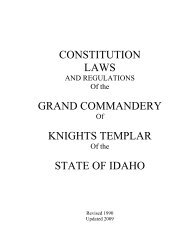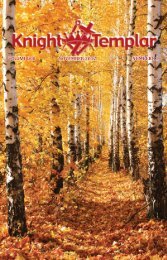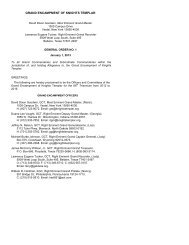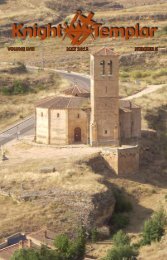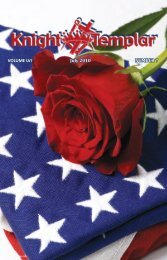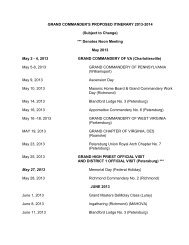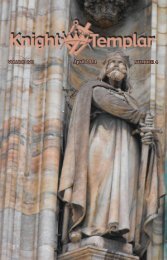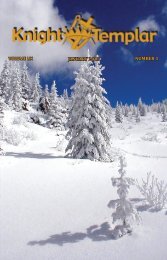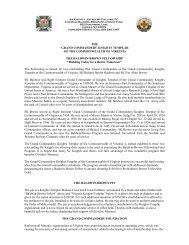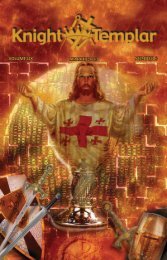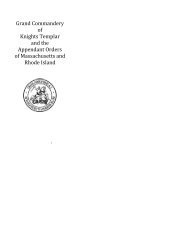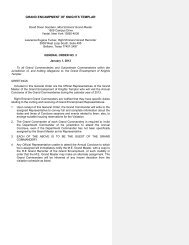Brother Richard E. Byrd - Part II
Brother Richard E. Byrd - Part II
Brother Richard E. Byrd - Part II
- No tags were found...
Create successful ePaper yourself
Turn your PDF publications into a flip-book with our unique Google optimized e-Paper software.
It was during this period that Lt. <strong>Byrd</strong> and Lt. WaIter Hinton developed a sextant for aerial use applying thecarpenter's level principle of a bubble glass to replace the sea horizon used by surface navigators.When the first transatlantic crossing by air was finally made by the NC4 under Lt. Commander Read, the official NavyDepartment announcement acknowledged the contributions of Lt. Commander R. E. <strong>Byrd</strong>, Jr., to celestial navigation:the <strong>Byrd</strong> sextant, drift and speed indicator, course and distance indicator, and zenithal projection of the Atlanticeliminating lengthy mathematical calculations of the past. Although his ambition to be a member of the first group to flyacross the Atlantic was thwarted, his contributions to the success of the expedition and to the later development ofcommercial aviation 'were many and great.In the period immediately following World War I, while General Billy Mitchell crusaded for a separate air force anddramatized air power by sinking ships, <strong>Byrd</strong> played a decisive role in the Navy's efforts to develop the Naval Bureau ofAeronautics.<strong>Byrd</strong>'s position was unique. While older officers were sea dogs opposed to aviation, <strong>Byrd</strong> was regular Navy fromAnnapolis and a trained pilot. As a retired officer, he had no career to thwart and could not be cashiered for speakingout. The most severe penalty which could be invoked would be to return him to inactive duty. <strong>Byrd</strong> wrote a sample billfor the creation of a Bureau of Aeronautics in the Navy Department, testified before Congressional Committees in itsbehalf, and successfully lobbied in Congress for its passage.It was at <strong>Byrd</strong>'s suggestion at the end of World War I that a Naval Reserve program was established to afford Navypilots an opportunity to keep up their flying skills after their return to civilian-life. In the establishment of the first reservecenter in Massachusetts, <strong>Byrd</strong> not only recruited the former pilots to volunteer for the reserve training but even succeededin getting them to give their time to building and renovating the facilities.In addition to being an able administrator, scientist and explorer; <strong>Byrd</strong> was the author of four books: Skyward, LittleAmerica, Discovery and Alone.Raised in Federal Lodge No.1, Washington, D.C., in 1921; he later affiliated with Kane Lodge No. 454, New YorkCity. He was also a member of National Sojourners Chapter No.3 at Washington. <strong>Byrd</strong> dropped Masonic flags over bothpoles during his flights. Sixty of the 82 members of his Antarctic expedition of 1933-1935 were Freemasons. Theyestablished First Antarctic Lodge No. 777 of New Zealand in 1935.




